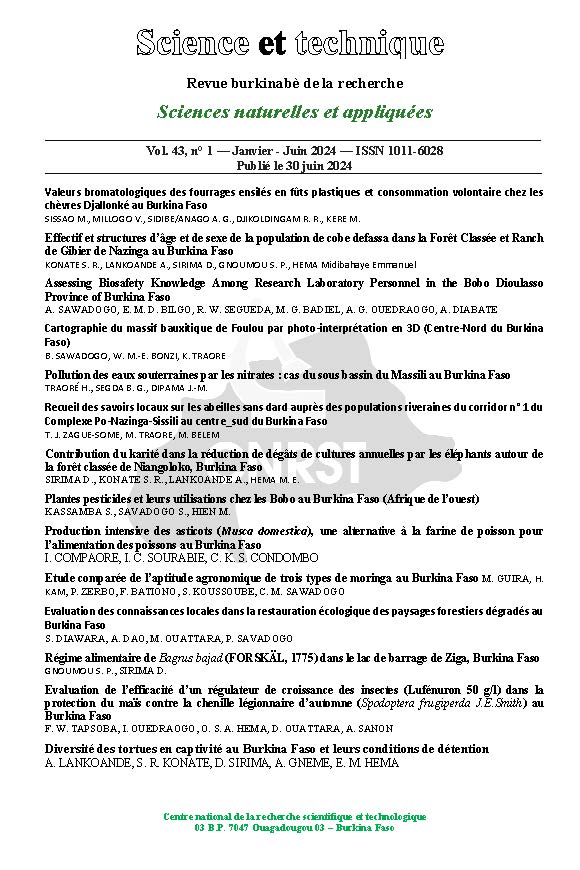Pesticide plants and their traditional uses in Bobo society of Burkina Faso (West Africa)
Keywords:
Pesticide plant, Endogenous knowledge, Ethnobotanical survey, Bobo ethnic group, Burkina FasoAbstract
This study aims to take stock of endogenous knowledge on the fight against pests and the uses that populations make of plants in Bobo society in Burkina Faso. The study was based on ethnobotanical surveys carried out from 2022 to 2023 in the Hauts-Bassins region. The data from the surveys were entered then processed on Excel and JMP. Surveys show that people use plants to fight against insects and ticks, animal parasites and disease-carrying insects and to preserve cereal and Leguminosae family plant seeds. A total of 35 species divided into 34 genera and 25 families have been recorded. The species are used either directly or powdered into ash or decoction. The leaves are the most used organs.
The most cited species by populations are Cassia nigrican Vahl, Hyptis spicigera Lam., Hyptis suaveolens (L.) Poit., Azadirachta indica A. Juss., Calotropis procera (Aiton) W.T. Aiton, Eucalyptus camaldulensis Dhnh., Vitellaria paradoxa C.F. Gaertn, Cymbopogon schoenanthus (L.) Spreng., Nicotiana tabacum L., Khaya senegalensis (Desr.) A. Juss. and Securidaca longepedunculata Freen. Farmers must promote and use these endogenous knowledges instead of chemical methods, which have already shown their effects on the environment.

